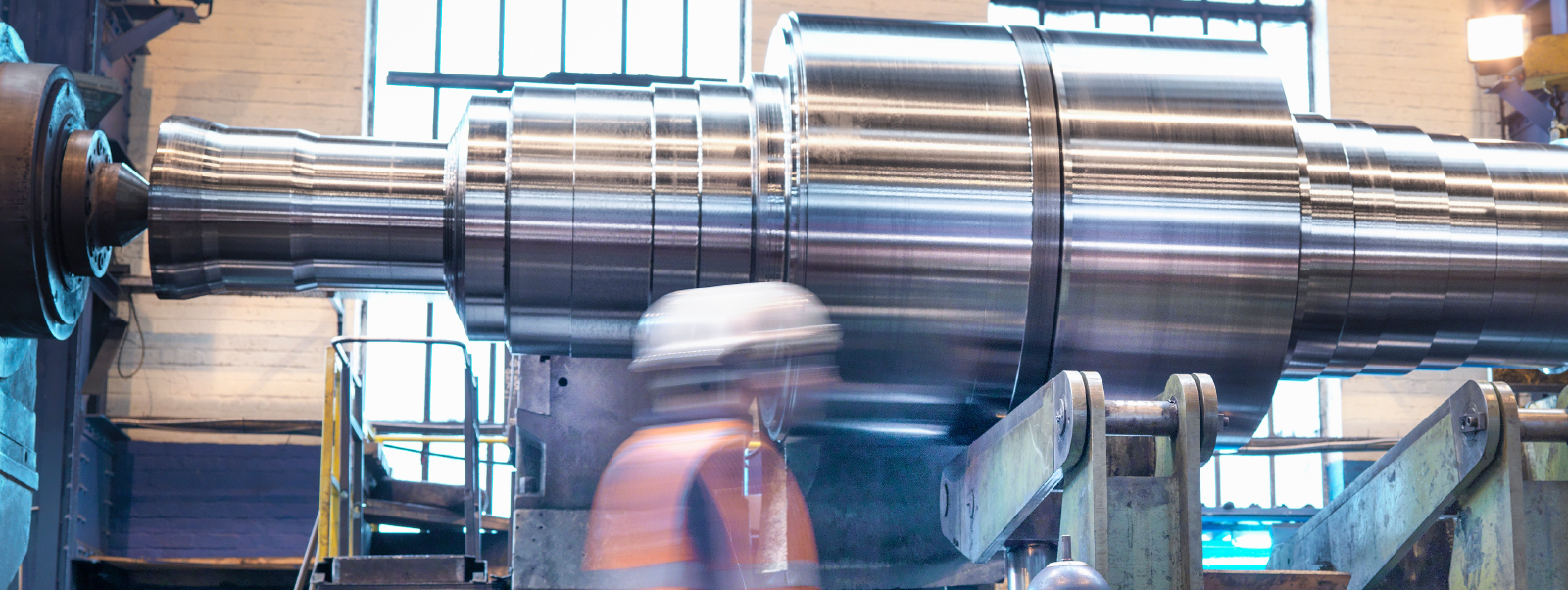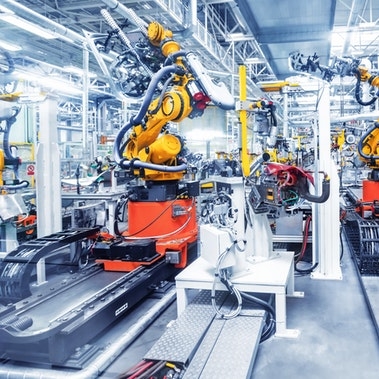The manufacturing industry, like many other industries, faces massive changes due to digitization – both from a business model perspective and, just as critically, from a rise in productivity. While these transformations are well understood, two important questions remain: How will digitization affect the workforce and what do companies need to do to drive this change?
Even though the expected degree of digitization will differ between the various sub-sectors, business models, and functions, manufacturing companies face a wide array of digital trends and opportunities along the entire value chain. Too often, the discussion is focused on the automation of production processes. Innovations such as co-robots, where robots and employees work hand-in-hand, only represent the outward manifestations of change. Under the surface lie innovations that will power the industry going forward: big data, advanced analytics, artificial intelligence (AI), and automated back-office processes have the power to change the way companies work in the future – to a much greater extent than the next evolutionary step in shop floor automation.
THE MANUFACTURING WORKFORCE WILL SHIFT IN SIZE, SHAPE, AND REQUIRED SKILLS
Over the past 20 years, manufacturing companies on average saw about a 25 percent improvement in productivity, due mainly to automation and standardization in production processes. Based on a multi-client study conducted by Oliver Wyman, digital levers could drive even greater gains in the coming decade. Based on current production volume figures, this change could result in a reduction in a manufacturer’s workforce of up to 25 percent full-time equivalents (FTE), driven by artificial intelligence or back-office automation or by using technology to foster collaboration (and increase outsourcing in the area of R&D, for example). In addition, it will cause a significant recalibration in the type of tasks the workers perform. (See Exhibit 1.)
Exhibit 1: Workforce reductions driven by automation
Activity-based analysis specific to the organization’s distribution of employees across the value chain is required for specific projections
Source: Oliver Wyman analysis
Along the value chain, various functions offer potential for digitization, chief among them indirect production functions, technical services and administration, which may yield high rates of workforce reduction.
In indirect production functions, such as production planning and industrial engineering, for instance, will receive a productivity boost through big data analytics. Data collected by sensors in real time and artificial intelligence that analyzes and interprets the information will provide actionable insights to industrial engineers. To achieve this goal, however, new data scientists will be needed to develop and set up the systems while the existing workforce will need to be trained for the new tools.
In technical field services, productivity will benefit from digital assistance solutions. To address the issue of fast response in the case of clients’ on-site problems, a plant-engineering company already makes use of video glasses that allow the field technician or client staff to be connected to a service engineer at headquarters, who is able to see what the on-site staff member sees and give advice. In near future, the service engineer back at headquarters will be able to send specific information such as drawings, videos, or procedures directly to the data glasses, so that the on-site technician can get the best possible support.
Digital disruptions could drive manufacturing workforce productivity increase by 25%
Digitization of administration and back-office activities will leverage artificial intelligence and robotic process automation. While the use of algorithms and AI will boost data-analysis tasks (such as sales reporting and forecasting), automation will increase productivity of transactional tasks in areas such as accounting or Human Resources while delivering a better, and more seamless, user experience.
Digitization will reduce the share of routine transactional activities, enabling employees to focus on value-adding tasks. But to make use of this capability, the employees will need to develop new skills and become more digitally fluent. While training in process-automation tools is relatively easy, training in AI tools (such as supporting the development of commodity strategies in the purchasing department or laying the foundation for pricing decisions in sales) is more complex: Besides the learning on how to use AI tools, employees need to understand how the tools work to make full use of them. Additionally, employees will have to adjust to the new reality, one in which AI is more capable of analyzing complex, multifaceted problems than they are. Only if these requirements are met will staff be able to benefit from AI. While existing staff can be trained on the use of those digital tools to certain extent, there will be new job profiles for which no current employee has the competences or can be trained easily, such as data scientists.
Companies not only need to think about their internal workforce, but also of an external workforce strategy to find, attract, recruit, and motivate digital specialists, talent that typically is drawn to digital companies such as Google or nimbler startups. While manufacturers must increase their attractiveness and develop more flexible ways to engage with these talents, they may think about cooperating with universities, research institutes, and other companies to capture the digital talent.
Moreover, manufacturing companies need to define how to organize collaboration internally. Given that there are employees of different ages, digital savviness, background, and willingness to change, motivating and moving staff towards the “digital avenue”, and the way how to combine the legacy corporate culture with new requirements for the digital age, needs an orchestrated, well thought out approach.
Manufacturers should rethink their workforce planning and recruitment processes to be more dynamic and agile. Instead of concentrating on existing career structures and recruiting channels, HR managers need to identify recruitment priorities for the future, finding the right people with the right skill sets, whether a job currently exists for them or not.
FOUR STEPS TO A DIGTALLY SAVVY ENTERPRISE
Manufacturers must begin preparing now for the digital talent ecosystem, following a four-phase workforce for the future framework. (See Exhibit 2.)
Exhibit 2: Four-phase workforce for the future framework
A dynamic framework for defining and delivering the workforce for the future
Source: Oliver Wyman analysis
Set the vision and prepare for change. Manufacturers need to determine the changes affecting their workforces and what those changes mean. A solid starting point involves identifying the impact of different trends on the workforce – not just digital trends, but demographic, organizational, and environmental ones, too. Companies should evaluate several workforce scenarios via research on their peers and their industry’s disruptors. They then must review the impact of identified trends, qualitatively and quantitatively assessing the changes across the value chain. The next steps involve building alignment within the leadership team regarding their future workforce and determining the organization’s readiness.
Map the current workforce and forecast future needs. Company leaders must define the future workforce’s profile. That involves mapping the size, shape, and skill sets of today’s workforce, using a standardized approach with company specific adaptations, to gain a clear picture.
Determine and design workforce strategies. While great aspirations tend to move people to action,
manufacturers need to understand and map out the road that lies ahead concretely. To start with, they must design strategies for optimizing relevant talent pools, identifying the best ways to engage talent while developing compelling “employee brand” and value propositions. Then, firms should use technology to access relevant talent pools, expanding the availability of critical skill sets and enabling a more flexible organization.
In a next step, manufacturer must build an integrated transformation plan to bring together new workforce strategies and organizational changes. Succeeding here will require strong stakeholder buy-in.
Deliver the transformation. Driving transformation is the goal, and this requires a company’s personnel to get behind it. But that will only happen if company leaders themselves buy in to the change. A transformation management office can play an important role in implementing the roadmap. However, manufacturers will need good communication strategies that target affected employee groups and offer training on new technology platforms.
LEARNING THE DIGITAL ROPES
Manufacturers must get ready now if they want to gain a competitive edge. By starting today, they can get a jump on the competition in mastering – and benefiting – from the disruptive digital forces that lie ahead.





